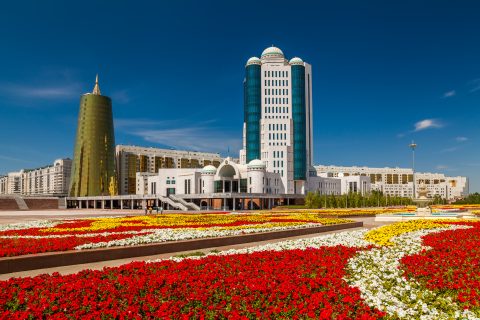All the more companies are identifying the same trend in Eurasian transport. With sea transport currently strained due to the situation in the Red Sea, rail is gradually becoming the preferred mode of transport between China and Europe. This is especially true for customers who want to avoid long transit times. As Martin Koubek, director of Silk Road and CIS at METRANS, underlined, “Rail is again becoming a good transport alternative for China-Europe shipments”.
Koubek explained that his company is experiencing increased demand from different types of customers. “It is mainly those who need faster transportation, and the longer transit time via the Cape of Good Hope is already too high for them,” he said. Additionally, he clarified that customers targeting rail as an alternative currently are primarily focused on transporting electronics and consumer goods with high added value.
Martin Koubek, director of Silk Road and CIS at METRANS. Image: © METRANS.
Understandably, the higher sea freight rates also contribute to the shift of volumes from sea to rail. Nevertheless, it is not easy to determine whether the shift can only be attributed to them since it is not easy to calculate them. “We don’t know the exact sea freight costs. It´s not possible to evaluate them since sea operators also have long-term agreements, just like rail freight companies. We could only see that FAK rates for the sea and rail are closer to each other than they were last year,” explained Koubek.
China-Europe trains almost double
The increased demand that METRANS and other companies are experiencing at the moment can be measured in different ways. METRANS has noticed a growth in demand starting in the final quarter of 2023: “From the last quarter of 2023, we can see higher demand on the New Silk Road compared to the average situation of last year. In fact, we can see that the number of trains departing from China to Europe has almost doubled,” highlighted Koubek.
As for the possible bottlenecks that rail might face due to the increased demand and traffic, Koubek said their effects are minimal. “Every wither we face some challenges on the China-Kazakhstan border, which did not change this year. However, in Europe, we don´t see limitations on rail infrastructure or terminal capacity currently,” he said.
He concluded that METRANS, specifically, is ready to cope with the situation. “Our terminal in Malaszewicze CL EUROPORT is prepared to accept and cope with higher volumes, and we have ensured sufficient rail and truck capacity to keep cargo moving as fast as possible”.
Also read:
Red Sea situation ‘a pleasant headache’ for the rail industry
